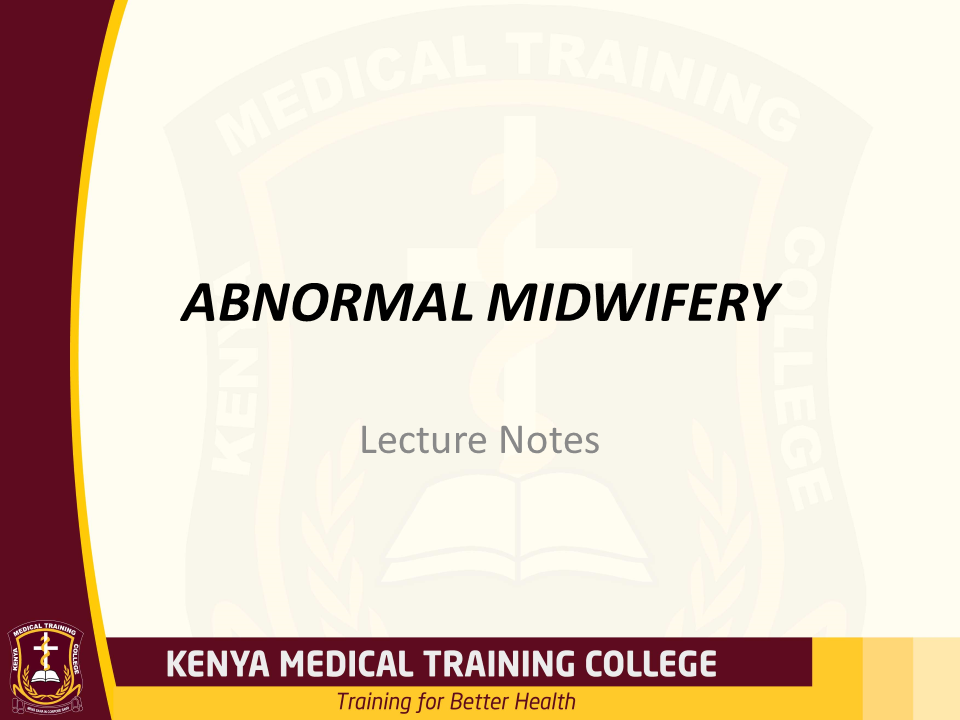- Pulmonology
- Clinicals
Pneumothorax: Types, Causes, Clinical features, Diagnosis and treatment
- Reading time: 6 minutes, 15 seconds
- 226 Views
- Revised on: 2020-12-09
Pneumothorax is a collection of air in the pleural cavity between the visceral and parietal pleura resulting into loss of the normal negative sucking pressure in the pleural cavity causing partial or complete lung collapse.
- From respiratory physiology, the visceral pleura is the one that lines the lungs and the parietal pleura lines the chest wall and there exists a potential space in between with a negative pressure known as pleural cavity.
In pneumothorax, air can enter this pleural space as the result of lung disease or injury.
Types of pneumothorax
Pneumothorax is classified based on the cause as spontaneous or traumatic pneumothorax.
Spontaneous pneumothorax can be also further classified as
- · Primary spontaneous pneumothorax when there is no any clinically underlying lung disease or
- · Secondary spontaneous pneumothorax when it happens as a complication of an underlying lung disease.
A recurrent pneumothorax is a second episode of spontaneous pneumothorax that can either be ipsilateral (on the same side) or contralateral (opposite side).
Traumatic pneumothorax is a type of pneumothorax that is caused by a penetrating trauma such as a penetrating gunshot wound, stab injury or surgical mistake on the chest cavity.
Tension pneumothorax on the other hand is a life-threatening variant of pneumothorax that is characterized by progressively increasing positive pressure within the chest and cardio-respiratory compromise.
It is of importance to know that; tension pneumothorax can result from any type of pneumothorax.
Epidemiology
Primary spontaneous pneumothorax occurs more commonly in thin, tall athletic men in a ration of 6male :1female.
It has a peak incidence between 20–30 years of age.
Secondary spontaneous pneumothorax occurs more in males too than female but at a smaller ratio of 3:1.
It has a peak incidence of 60–65 years of age.
Causes of pneumothorax
Spontaneous pneumothorax is caused by;
- Primary causes with no underlying lung pathology (idiopathic or simple pneumothorax)
- Ruptured subpleural apical blebs of bullae.
Risk factors
The risk factors for development of primary pneumothorax are:
- Family history
- Young, tall and thin male gender
- Asthenic body of a slim and tall stature
- Marfan syndrome and Homocystinuria
- Smoking is the most common preventable cause
Secondary pneumothorax as noted in the classification occurs as a complication of underlying lung disorder.
The most common risk factors for its development are;
- Chronic obstructive pulmonary disease (COPD) is the most common common cause.
- Smoking leading to a rupture of bullae in emphysema
- Cystic fibrosis
- Pulmonary tuberculosis
- Pneumocystis pneumonia with a rupture of a cavity
- Lung cancer/malignancy
- Catamenial pneumothorax
Traumatic pneumothorax
Traumatic pneumothorax is caused by either a blunt or penetrating trauma.
A blunt trauma such as an impact to the thorax that causes a rib fracture
Penetrating injury like a stab wound or a gunshot wound
Iatrogenic pneumothorax results from the treatment modality being applied to the patient such as barotrauma secondary to mechanical ventilation with a high positive end expiratory pressure (PEEP), lung biopsy, thoracocentesis, bronchoscopy of insertion of a central venous catheter.
Pathophysiology of pneumothorax
Pneumothorax occurs when there is an increased intrapleural positive pressure contrary to the normal negative pressure that usually pulls the lungs out and preventing collapse. In this case of an increased intrapleural pressure there is a consequential lung and alveolar collapse which leads to a decreased ventilation perfusion(V/Q) ratio and increased right-to-left shunting of blood.
In spontaneous pneumothorax where there is a rupture of blebs or bullae, air moves into pleural space from within the lung increasing positive pressure in the pleural cavity. The ipsilateral lung is then compressed and collapses leaving the unaffected lung. There is no diaphragm shift downwards or tracheal shifting in this case.
Traumatic pneumothorax
In traumatic closed pneumothorax that occurs due to blunt trauma to the lung such as a rib fracture, air enters through a hole in the lung into the pleural cavity.
In open pneumothorax following a penetrating thoracic trauma, air enters through a communicating wound in the chest wall into the pleural space on inspiration and leaks to the exterior on expiration and shifts between the lungs.
Tension pneumothorax
Tension pneumothorax results when there is either a disrupted visceral pleura, injured parietal pleura, or tracheobronchial tree which then allows one-way entry of air into the pleural space on inspiration but cannot exit. (One-way valve mechanism). In this way there is a progressive accumulation of air in the pleural space with each inspiration and increasing positive pressure within the chest. This leads to a collapse of ipsilateral lung and compression of contralateral lung, the trachea, heart, and superior vena cava.
A compression of the vena cava leads to impaired respiratory function, reduced venous return to the heart and reduced cardiac output and eventually hypoxia and hemodynamic instability.
The impaired venous return makes these patients with tension pneumothorax to develop ankle edema.
Clinical features
Depending of the present type of pneumothorax, patients may present with varying clinical features ranging from asymptomatic to hemodynamically compromised patients.
Most patients present with complains of sudden-onset dyspnea, ipsilateral pleuritic chest pain with diminished or absent breath sounds, and hyper-resonance and decreased tactile fremitus on the ipsilateral lung.
Tension pneumothorax present with:
- Distended neck veins,
- Tracheal deviation,
- Hemodynamic instability (tachycardia, hypotension, pulsus paradoxus)
- Sudden, severe ipsilateral pleuritic chest pain and
- Dyspnea,
- Reduced breath sounds and
- Hyper resonant percussion,
- Severe acute respiratory distress with cyanosis, restlessness, diaphoresis,
- Reduced chest expansion on the ipsilateral side
These patients may be having secondary injuries if the cause was trauma.
Mechanically ventilated patients with tension pneumothorax will present with
- Increased ventilation pressure
- Reduced air flow
- Tachycardia, hypotension
- Rapid decrease in SpO2
Diagnosis and investigations
As an attending clinician or doctor, you should have a high index of suspicion for the presence of both conditions.
A chest X-ray will confirm the diagnosis.
A chest CT scan can provide information about the underlying cause such as a bullae in cases of spontaneous pneumothorax.
A diagnosis of tension pneumothorax is primarily a clinical one because the condition itself is an emergency and warrants initiation of an immediate treatment with decompression as a priority.
An upright PA Chest x-ray is indicated in all patients with suspected pneumothorax
A chest x-ray will demonstrate;
- Deep sulcus sign
- Ipsilateral pleural line with reduced lung markings
- Abrupt change in radiolucency
- Hemidiaphragm elevation on the ipsilateral side
- Decreased lung radiodensity and
- Deep costophrenic angle on the ipsilateral side
- There may be present parenchymal lesions
In tension pneumothorax the chest x-ray will show;
- Ipsilateral diaphragmatic inversion or flattening
- Widened intercostal spaces
- Mediastinal shift toward the contralateral side
- Tracheal deviation toward the contralateral side
Ultrasound may be performed in cases of trauma or for rapid bedside assessment and may inidcate;
- Absence of B-lines
- Absence of pleural sliding
- Barcode sign instead of seashore sign in M-mode
- Combination of prominent A-lines and absent B-lines
Chest CT scan is performed in cases of an uncertain diagnosis despite chest x-ray and in suspected underlying lung pathology so as to determine the cause ie bullae rupture and for presurgical workup. The findings are usually similar to the ones on a chest x ray.
The size of a pneumothorax is determined during the imaging time on CXR or a CT scan using the Apex-to-cupola distance , interpleural distance at the level of the lung hilus or Collins method: Calculated pneumothorax size in percent of hemithorax
In most cases, imaging studies are sufficient to make a diagnosis. Laboratory tests such as;
Arterial blood gas analysis is indicated in patients with an SpO2 less than 92% on room air
Evaluation for carbon dioxide retention in patients with underlying lung disease who are on supplemental oxygen.
ABGs may demonstrate a reduced PaO2 level.
Treatment of pneumothorax
Unstable patients presenting with tension pneumothorax require immediate needle decompression.
Small pneumothoraces may resorb spontaneously, but larger defects usually require placement of a chest tube.
For optimal management, you are required to assess patient’s stability for a given treatment modality;






